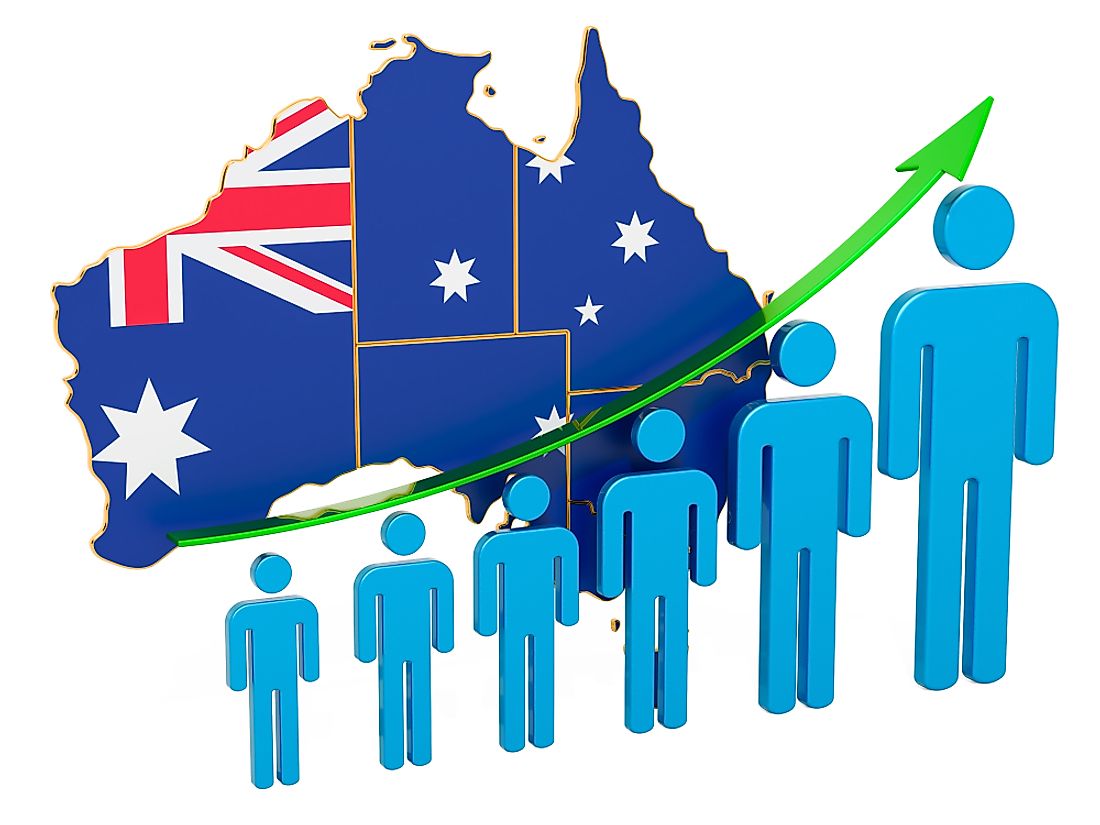Unemployment Rate by Australian State and Territory

Australia is a mixed market economy with a GDP of 1.3 trillion. The service sector dominates the Australian economy contributing 70% of the country’s GDP. The mining sector accounts for 7% of the total GDP and Australia’s economic growth is largely attributed to the mining sector and agriculture. Most of the country’s exports are destined to the East Asian markets, and the most popular exports include iron ore and coal briquettes. Although the mining sector has been experiencing decline in the recent past, the country’s economy has remained stable. From 1901 to 2000, the country’s GDP growth rate has averaged 3.4% annually.
Biggest Employers in Australia
The largest employment industries in Australia include health care, manufacturing, retail trade, and the service industry. The "big four" banks are big employers in the country. Other jobs are found in the IT industry and in tech. The country's largest company employers include Wesfarmers, Woolworths, and BHP.
Unemployment Rates in the Country
The unemployment rate in Australia is 5.7% according to the Parliament of Australia. The rates of unemployment in Australia have been averaging 6.92% from 1978 to 2016 and in 1992 was an all time high reaching 11.10%. In 2008 the country experienced the lowest levels of unemployment of 4%. The state of Queensland has the highest unemployment rate, at 6.5%, while the Australian Capital Territory has the lowest unemployment rate at 3.5%.
The high unemployment rate in Queensland is mostly due to the high rates of unemployment that exist in the Australian Outback. In this area, unemployment can skyrocket to over 14%. Many manufacturing and industrial projects that used to provide jobs in this part of the country are no longer undergoing.
Reasons of Unemployment
There are different reasons for the unemployment that has been experienced in Australia which include the cyclical weak demand for labor which led to employment growing slowly compared to the supply of labor. There was also the structural influence that affected the efficiency of matching the unemployed workers with the available or vacant jobs. According to the Reserve Bank of Australia, the growth in employment has not kept pace with the growth of the laborforce and therefore the share of the unemployed of the laborforce has been disproportionately increasing.
Measures Adopted to Solve Unemployment
Australia, like many other developed countries, is working on supporting economic growth by improving the labor market. The Australian government has implemented policies aimed at increasing the country’s growth potential and creating an environment that will generate approximately two million jobs over the next ten years. The government recognizes the role played by the private sector in creating employment and driving economic growth and therefore the policies are aimed on improving opportunities for businesses, which include strengthening their ability to compete in global markets.
Australian States And Territories With The Highest Rates Of Unemployment
| Rank | State/Territory | Unemployment Rate (%) |
|---|---|---|
| 1 | Queensland | 6.5 |
| 2 | South Australia | 6.3 |
| 3 | Tasmania | 6.2 |
| 4 | Western Australia | 5.7 |
| 5 | Northern Territory | 5.6 |
| 6 | Victoria | 4.7 |
| 7 | New South Wales | 4.5 |
| 8 | Australian Capital Territory | 3.5 |











